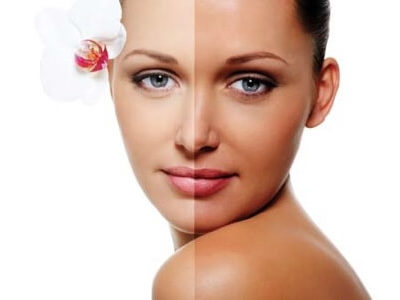When we were little, our moms chased us on the beach with SPF 60 and baseball caps to try to shield us from the burning rays of the sun. And if you hid from her, like I often did, you got payback: a sunburn. And not even cooling aloe can really fix that.
I have discovered my own sun-tanning remedy that’s worked very well for me. The first day I’m in the sun, I need to put on SPF 40 on my face and will still get a little pink on my nose and cheeks. For the rest of the summer, I can go into the sun with no problem (thanks to my 100% Sicilian dad). I don’t necessarily practice the safest sun habits, but I decided it’s totally worth it for my tan. But is a short-term tan really worth the potential long-term negative effects?
The C-Word
According to the Skin Cancer Foundation, Skin cancer is the most common form of cancer in the United States; 1 in 5 Americans will be diagnosed with it in their lifetime. Approximately 80 percent of sun exposure damage happens before the age of 18. That means that taking care of your skin up until that point is the most important time to do it in your whole life. If you go to tanning beds often, you’re damaging your skin before it has time to fully develop. Cancer, wrinkles, leathery skin and eye problems can be outcomes of excessive sun exposure.
For some people, the act of tanning goes beyond the aspect of the physical outcome. “The appeal of tanning beds for me is that I can keep my color, and it’s very relaxing,” said Elon University student and tanning bed user Mary Kathryn Smith. “Some people get manicures to feel relaxed, I go tanning.” To Mary Kathryn, it’s worth the potentially cancerous outcome. “As far as them being bad for my health, I try to use them in moderation because that is a reality.”
License to Tan?
Many states have put certain regulations on tanning bed use because of the results they may cause. After its infamous publicity from Patricia Krentcil, New Jersey has drafted legislation, including parts about teens showing I.D.’s, parents needing to be present to give consent and the ban on consecutive days of tanning.
“I think [laws are] a good thing, actually. Illinois needs parental consent, and I think teens are educated on the risks well enough, they just do what they think is cool and if parents are involved, maybe they will understand the risks a little more. Teens don’t fully understand the risks of cancer,” said Elon University student and tanning bed user Lauren Goworowski.
Celebrity Tan-a-Likes
Centuries ago, it was unheard of to be tan because it meant that you were of working class. Nowadays, Lauren Conrad’s natural Cali-girl tan is enviable. But there are still celebrities like Katy Perry, Anne Hathaway and Gwen Stefani who manage to keep their light skin flawless. A lighter glow is just as healthy looking and a bit safer. So when you head to the beach this summer, grab your usual sunglasses, your iPod and some magazines, but, most importantly, bring your sunscreen.
There are things you can do to protect yourself while still getting some color!
1.) Wear sunscreen no matter what. It will protect you, and you’ll still get a tint of color.
2.) Go to the dermatologist at least once a year to get freckles checked. If any of them are cancerous, they can remove them before they become too severe.
3.) Try self-tanning lotion. Mixing it with regular moisturizer gives it a really natural look without the harmful effects of sunrays.
4.) Limit or completely cut out time at the tanning bed. The more you use them, the greater risk you have to get skin cancer and even melanoma.
Image: http://wedding-darling.com/category/spray-tan/



















